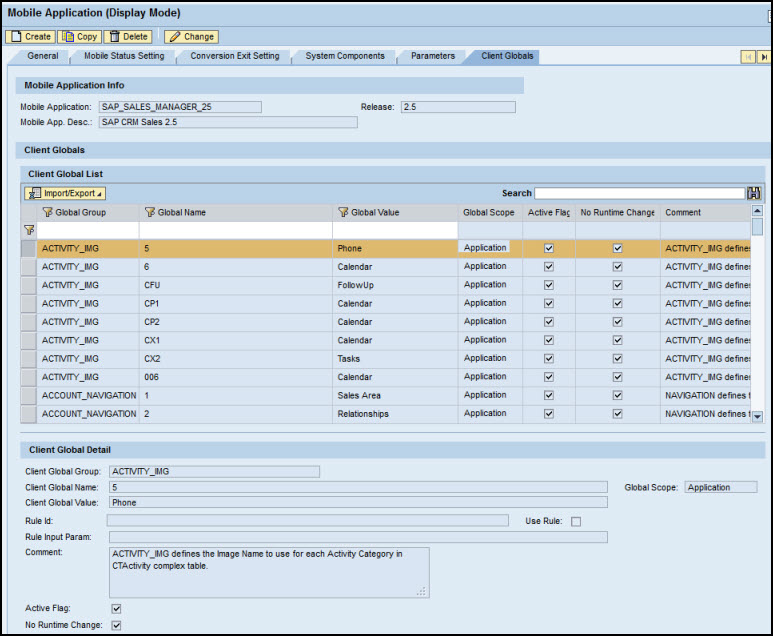Mobile Application - Client Globals
Use this tab to define client globals.
Mobile Application - Client Globals


Mobile Application Info
- Mobile Application: (Read Only) The name of the mobile application
- Release: (Read Only) The release number of the mobile application
- Mobile Application Description: (Read Only) A brief, easy to understand description of the mobile application
Client Global List
Note: The columns
in the Client Global List table are read only. Use the Client Global
Detail section to make any additions or edits to the table.
- Add button: Click Add to create a new global. Fill in the fields in the Client Global Detail section to automatically fill in the fields in this table.
- Delete button: Click Delete to delete an existing global. To delete a global, press the rectangle to the left of the Global Group column in the row you wish to delete and click Delete.
- Global Group: Global group from the Client Global Detail section
- Global Name: Client global group name from the Client Global Detail section
- Global Value: Client global value from the Client Global Detail section
- Global Scope: Global scope from the Client Global Detail section
- Active Flag: When checked, the Active Flag box is checked in the Client Global Detail section
- No Runtime Change: When checked, the No Runtime Change box is checked in the Client Global Detail section
- Comment: Comments from the Client Global Detail section
Client Global Detail
- Client Global Group: The group to which the global belongs. Groups are a means of organizing globals. References to a global include both the group name and the global name.
- Client Global Name: The unique name for the global
- Global Scope: The scope of the global value. There are
two options:
- Mobile Application: Value for all users of the application
- Mobile User: Value that can be overridden for individual users.
- Client Global Value: The currently configured value of the global. References to the global return this value.
- Rule ID: Name, or ID, of the ABAP or class
- Use Rule: When checked, the rule listed in the Rule ID field is active. If this value is active, then the Client Global Value field is not used.
- Rule Input Param: Parameters to use with the rule. Examples include a key value pair, a user parameter, or a table.
- Comment: Displays any comments added to the global to describe its purpose or current value. This has no effect on the global’s behavior and is provided for reference purposes only.
- Active Flag: When checked, the client global is activated in the system. Inactive globals are not available to the mobile application.
- No Runtime Change: When checked, the value of the global cannot be overridden. The configured value in the Configuration portal will always be the value. Globals without this setting can be overridden at runtime through synchronization processing.
Parent topic: Mobile Application Configuration